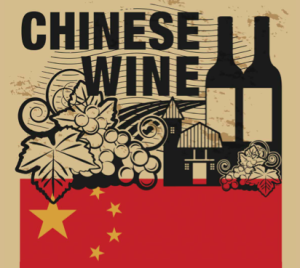Date£º
2014-05-04 15:09 Source£º
http://www.aeinvestor.com Author:
Pierre Ly, Cynthia Howson and Jeff Begun Translator:
Some people still find it hard to believe, but yes, China is now one of the largest producers of wine by volume in the world.

Some people still find it hard to believe, but yes, China is now one of the largest producers of wine by volume in the world. Last summer we were fortunate to spend a few weeks meeting some of the wonderful people who make up China¡¯s booming wine industry. And we tasted some truly delicious wines along the way. In China, like anywhere else, wine is great ¨C but wine and a story is even better, as our friend the Wine Economist likes to say. One of the best stories to pair with Chinese wine is one about local land management. A tour of Chinese wineries provides a fascinating peek at the many ways in which agribusinesses cope with sometimes ambiguous and always evolving land regulations.
From ¡®coffee grounds and ashtray¡¯ to ¡®lovely ripe black fruit¡¯
Chinese wine didn¡¯t always have a good reputation, to put it mildly, and some tasters¡¯ experiences were a bit scary.[1] However, the evolution of critics¡¯ tasting notes year after year constitutes vivid evidence of outstanding progress. Improvements are visible across many wine producers, small or gigantic, public or private (or both), and some wines have gained international recognition.
So what does the story of Chinese wine have to do with land management? In 2012, celebrity winemaker Michel Rolland urged Chinese wineries to work on their vineyards.[2] Ready-to-use winemaking technology and expertise are easy to import, but growing high quality wine grapes in new places is risky and takes some trial and error. To make this even more challenging, given China¡¯s rural land regulations, wineries cannot establish control over vineyards easily. In his 2011 book, Wine Wars, Mike Veseth noted that the small scale of Chinese agriculture was one of the most significant obstacles to overcome. If wineries have to work with hundreds of small growers on contract, how can they ensure a consistent supply of high quality wine grapes year after year? To make it even more challenging, contracts may be informal and difficult to enforce. Given these serious hurdles, we can only admire the amazing progress Chinese wineries have made.
Wine is made in the vineyard
Despite the near impossibility of purchasing rural land in China, most wineries have control over some land they can farm with hired labor, so they can call the shots to grow at least some of their grapes. Wineries can expand their vineyards by requesting an allocation of use rights over a tract of land from the government. However, given the widely publicized controversies over farmers¡¯ land rights, reallocations of rural land are carefully regulated. In poorer, more remote provinces like Ningxia, unused land is more widely available than on the coast, but it doesn¡¯t make it easy to access. It helps to find a local business partner who already has land, as Moet & Chandon has done in Ningxia for its sparkling wine project.
In more developed regions like Shandong, unused land is rare and farmers have good access to markets for the products they grow. In this context, two wineries we visited established their vineyards by renting a group of small plots from many farmers to consolidate them into one vineyard. Of course, rental agreements with a large number of small farmers entail significant transaction costs and enforcement issues. But many village collectives have helped coordinate land leases. In fact, it is a common arrangement used to promote rural industrialization beyond the wine industry, and it takes many different forms.
Despite all these local arrangements, many barriers remain to the development of rental markets for rural land. Where land is lacking, many wineries still have to buy a significant portion of their grapes from hundreds of individual growers. While working with so many farmers can be a daunting task, many of the delicious wines we tasted had to be made this way. To make it work, successful wineries like Grace Vineyard, based in Shanxi, have established good relationships with growers by providing credit, fertilizers and paying bonuses for better quality.[3]
Searching for extreme wine terroirs
Our last tasting in China illustrated another way to control land and grapes. Jim Sun, chief editor of Winechina.com, generously welcomed us to his cellar in the heart of Yantai, to share his insights as well as truly distinctive wines. One of them, branded ¡°Altiwine,¡± is made from grapes grown at high altitude vineyards in Yunnan province. Some of the best new world wines are made at high altitude for a reason. But getting to the top of the mountain isn¡¯t so easy. As long as only a handful of winemakers risk the adventure, difficult access is balanced by lighter competition for land and grapes. As one Chinese winemaker told us, ¡°opportunities and challenges come together.¡±
So what¡¯s next for Chinese wineries? How will future land reform affect them? Whatever happens, China¡¯s emerging wine industry turns out to be a fascinating lens through which to observe the many ways agribusinesses cope with ambiguity.